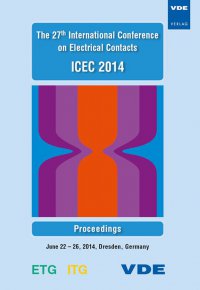Comparison between nickel and silver as coating materials of conductors made of copper or aluminum used in electric power engineering
Konferenz: ICEC 2014 - The 27th International Conference on Electrical Contacts
22.06.2014 - 26.06.2014 in Dresden, Deutschland
Tagungsband: ICEC 2014
Seiten: 6Sprache: EnglischTyp: PDF
Persönliche VDE-Mitglieder erhalten auf diesen Artikel 10% Rabatt
Autoren:
Fuhrmann, Torsten; Schlegel, Stephan; Großmann, Steffen (Institute of Electrical Power Systems and High Voltage Engineering, Technische Universitaet Dresden, Dresden, Germany)
Hoidis, Markus (ABB Switzerland Ltd. Corporate Research, Baden-Daettwil, Switzerland)
Inhalt:
In electric power transmission, conductors made of copper or aluminum are mainly used. On the surface of these materials an insulating oxide layer grows in ambient air. Because of this, contact surfaces in electrical joints using these materials are frequently coated, for example with silver or nickel. In the high-voltage switchgear standard IEC 62271-1:2007/A1:2011 electrical joints with silver-coated and nickel-coated contact partners are equated regarding the allowed maximum temperature. Silver has been established as a coating metal because of its excellent electrical conductivity and its resistance to the formation of oxide layers at normal operating temperatures. Nickel can be coated directly on commonly used metals of electrical engineering. With sufficient thickness and tightness it works effective as a diffusion barrier [1]. But the hardness of nickel and the formation of thin oxide layers in ambient air can result in a lower number of a-spots in electrical joints. Because the commodity price of nickel is much lower compared to silver, the current research focuses on the contact and long-term behavior of nickel-coated electrical joints. In long-term experiments bolted joints with nickel-coated and silver-coated busbars made of copper or aluminum are investigated at operating temperatures of 115 °C and above. The joint resistance is measured time-dependent and evaluated with the performance factor. In addition to the current-carrying connections metallographic investigations were carried out with similar joints aged in ovens.


